This is a list of locomotives we wish we could have preserved, the ones that got away. Gone, in some cases, before we even realized that they were on the endangered species list. Going from work-a-day diesel locomotives to denizens of deadlines, they didn’t make it to museums or public displays, just the junk man. Some locomotive models were successful, others sort of, and a few were dismal failures. But now they all have one thing in common: they’re gone.
But if we could turn back the clock, here’s some what we’d like to have seen saved.
Check out more great articles on locomotives by David Lustig.
1. Lima center-cab transfer LT2500: a transfer locomotive deluxe
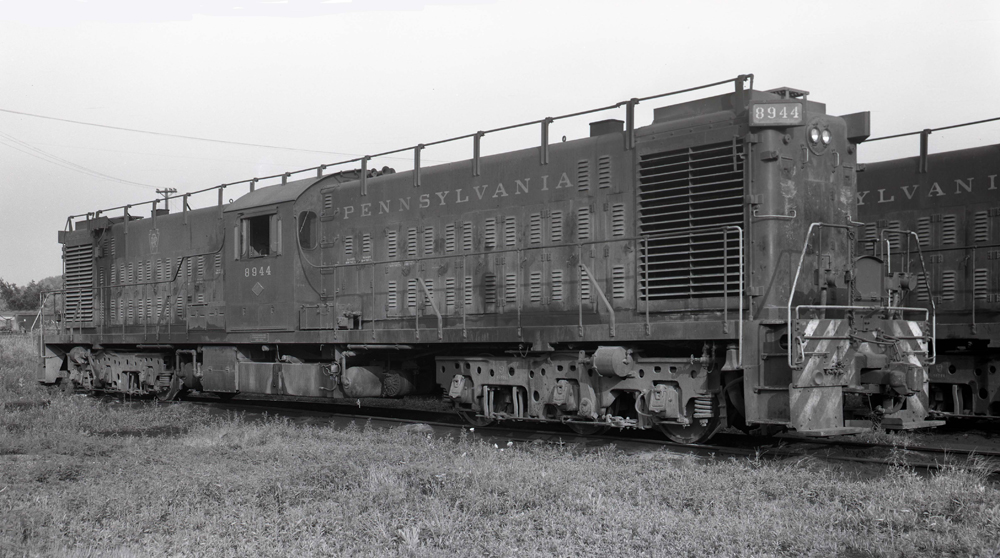
Center-cab road locomotives ranging from 2,000 hp to 2,500 hp and ostensibly built for heavy-duty transfer work were in demand in the early 1950s. They found work on the Pennsylvania; Minneapolis, Northfield & Southern; Santa Fe; Elgin, Joliet & Eastern; Cotton Belt; Duluth, South Shore & Atlantic, and Trona. Soo Line gained a locomotive after absorbing the Duluth, South Shore & Atlantic. The majority were built by Baldwin, but just under two dozen were churned out by Lima-Hamilton. There is a single Baldwin preserved, the one belonging to MN&S. It’s at the Illinois Railway Museum at Union. However, all of the Limas, only purchased by Pennsylvania, are history.
2. Baldwin DR-6-4-2000 Sharks: Passenger locomotives with teeth!
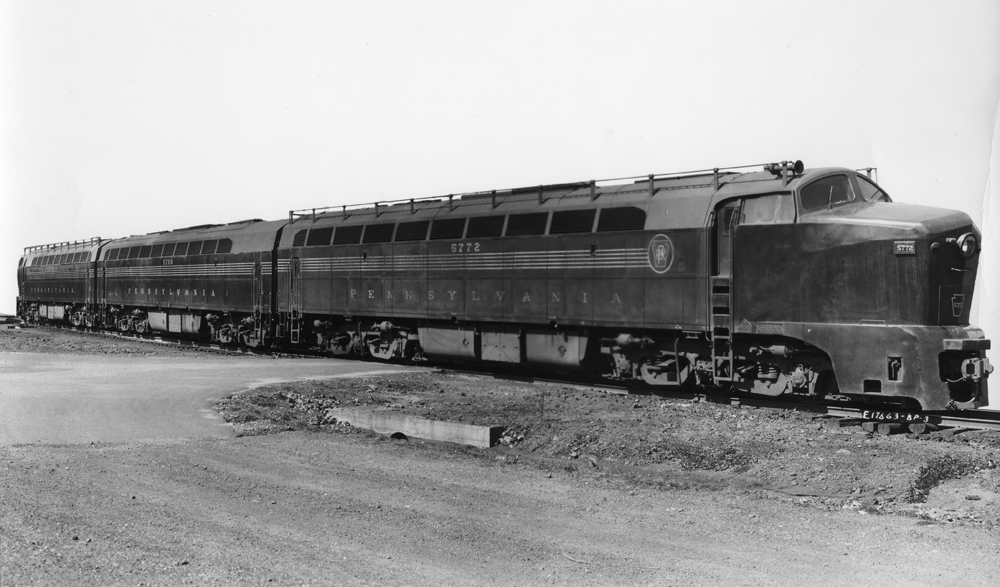
Only found on the Pennsylvania Railroad, these were a series of 18 A units and nine B units erected in 1948 by Baldwin. Styled by industrial designer Raymond Loewy, they were originally planned to be set up in A-B-A configuration to provide 6,000 hp to move the company’s finest passenger trains. Alas, they were beset with mechanical problems and were soon assigned to locals and commuter trains that required a less strenuous schedule. A few were even regeared for freight service.
3. FM Erie-builts: Designed by one builder, built by another
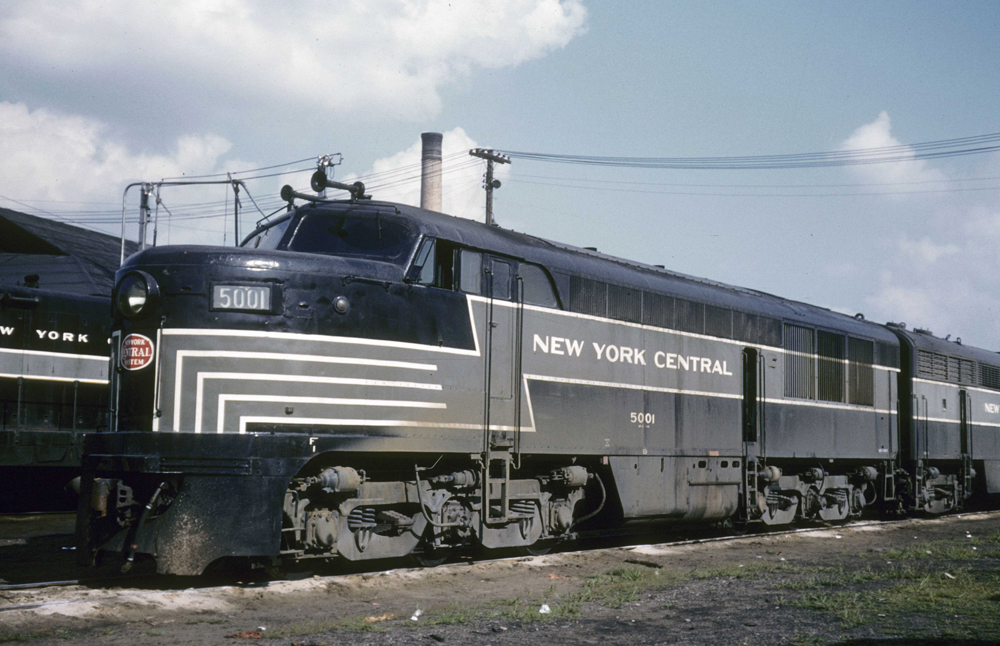
When Fairbanks-Morse wanted to market a streamlined passenger locomotive, the company didn’t have the floor space in its Beloit, Wis., plant to build the units and didn’t want to wait until it could. So, assembly was subcontracted to General Electric in Erie, Pa., skilled in building locomotives but not a direct competitor due to the latter not marketing big road units in the United States. Hence the nickname “Erie-builts.”
Envisioned as being used in 6,000-hp, three-unit sets, the first order was for Union Pacific, followed by Pennsylvania; Kansas City Southern; Chicago & North Western; Santa Fe; and New York Central. Eighty-two As and 29 boosters were built between 1946 and 1949. While the majority were for passenger service, a few came right out of the factory set up for freight use. Frequent prime-mover failures led to a number being re-engined with EMD power. No FM Erie-Built units survive intact.
4. Alco DL109: EMD’s chief early passenger locomotive competition
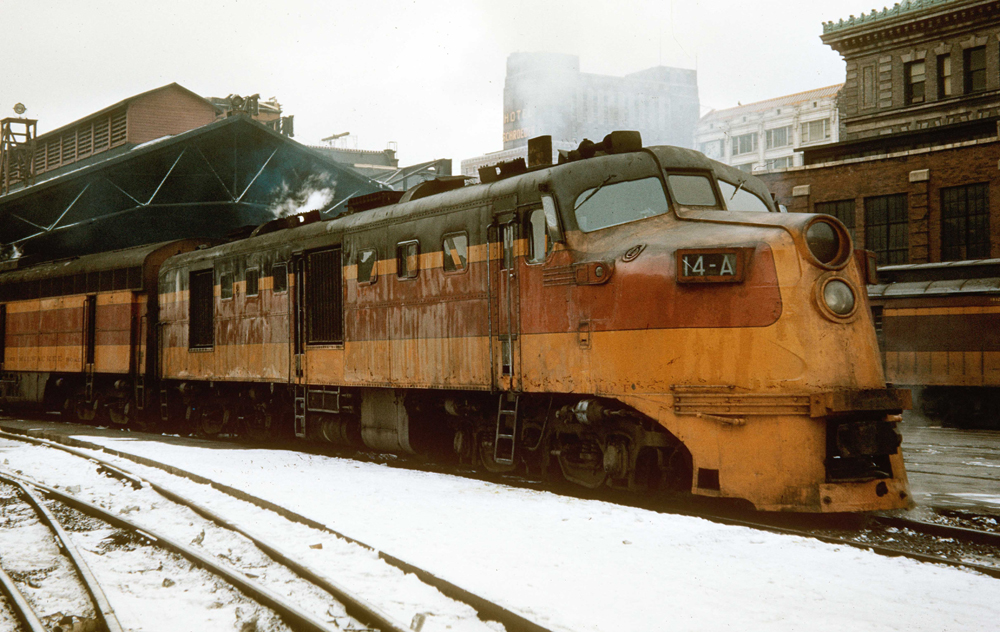
We’re lumping all the various DL Alco passenger units under the DL109 banner, even though the builder officially listed them as anything from DL103 to DL110, depending on how they were configured. All were 2,000 hp.
Starting with the DL103b built for Rock Island as No. 624, this is the one model that had a pair of Alco’s 538T 1,000-hp turbocharged prime movers. All others had the similarly rated 539T. If the number 539 sounds familiar, it’s what Alco put in the superb S1 through S4 switcher series, as well as its RS1 light road switcher, among others.
As production geared up, units built under the DL109 umbrella included those for Gulf, Mobile & Ohio; New Haven; Milwaukee Road; Chicago & North Western; Southern Railway, and Santa Fe. Consider them competition to EMD’s early E units.
New Haven was the only railroad with a large roster — 60 built between 1942 and 1945. Originally considered passenger locomotives, the railroad had them moving varnish in the daytime and powering freights at night between Boston and New York. They were so well thought of by management that when the locomotives were wearing out, the entire fleet was put through an extensive rebuilding program.
They concluded their last active days in commuter service in the Boston area in the late 1950s, with one unit being repurposed as a power plant for use as a test bed for third-rail applications. It lasted until Penn Central days and was finally off the roster in 1969.
5. Alco C855: a monster on rails
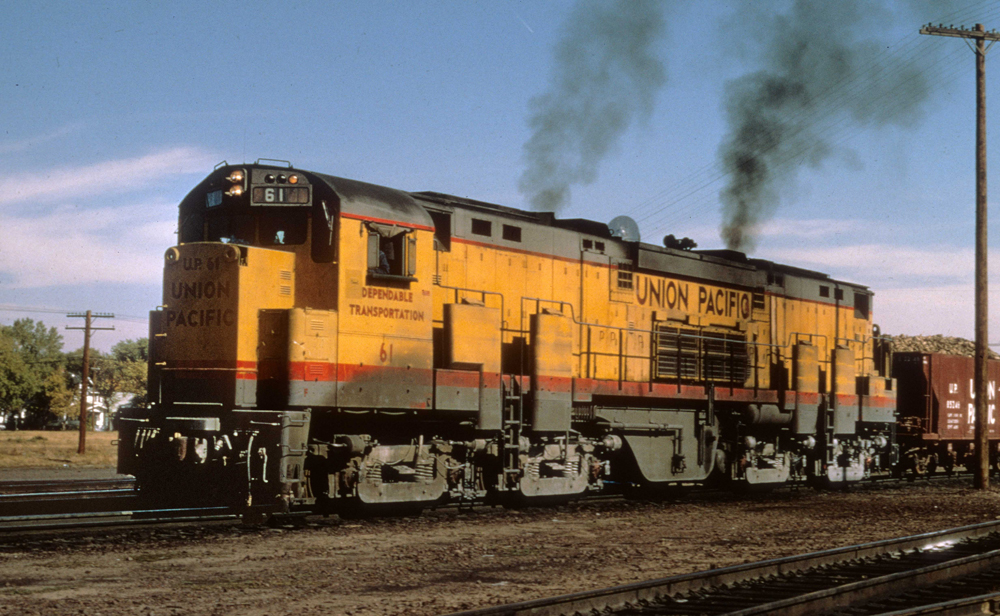
Union Pacific was desperately exploring ways to drive down fuel and maintenance costs on its trains in the 1960s. One solution was monster diesels, and the builders were all too happy to comply. EMD offered various D-D trucked creatures. GE created both six-axle and eight-axle behemoths, and in 1964, Alco came up with the Century 855, a 5,500-hp locomotive built with just the Union Pacific in mind.
Equipped with two 16-cylinder 251C prime movers, UP tried to keep the two As and single B together to create one giant locomotive set. Assigned to the Overland Route, they never met their hoped-for goals and were soon sidelined. The trio was off the roster by 1972.
6. Alco DH643: An American diesel hydraulic freight road unit
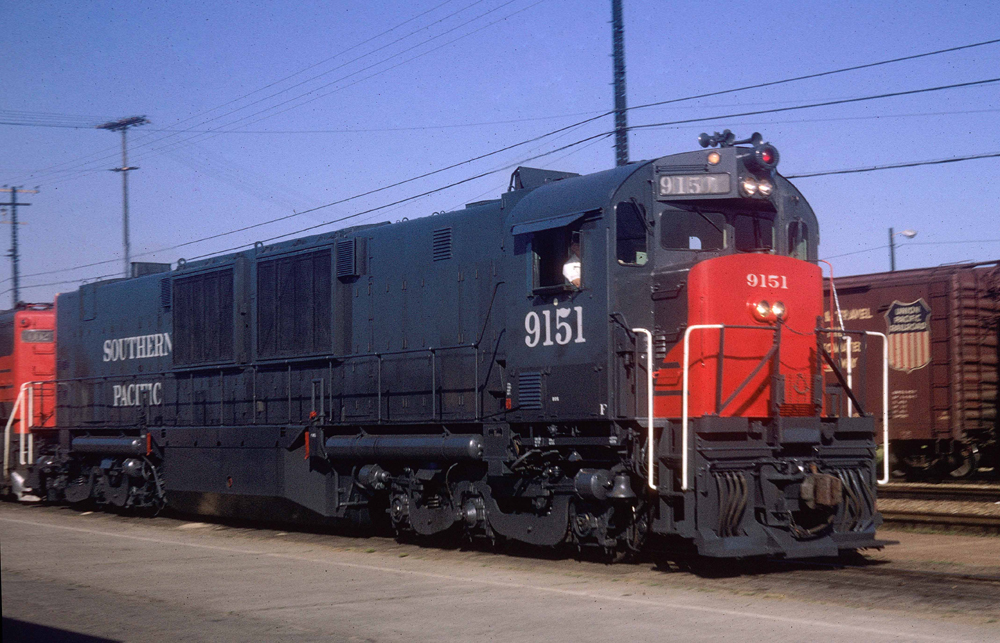
The C-643DH was another Alco two-engine diesel for which the builder had great hopes. Sporting a pair of 251C prime movers, these were the first road freight locomotives equipped with a hydraulic drive. Putting out 4,300 hp, they were America’s answer to the Krauss-Maffei diesel-hydraulics ordered by Denver & Rio Grande Western and Southern Pacific. Three were built in 1964 for Southern Pacific. Alas, they did not live up to expectations and the trio, like the German KMs, were gone from the roster by the early 1970s.
7. EMD DD35: An attempt to put two locomotives on one frame
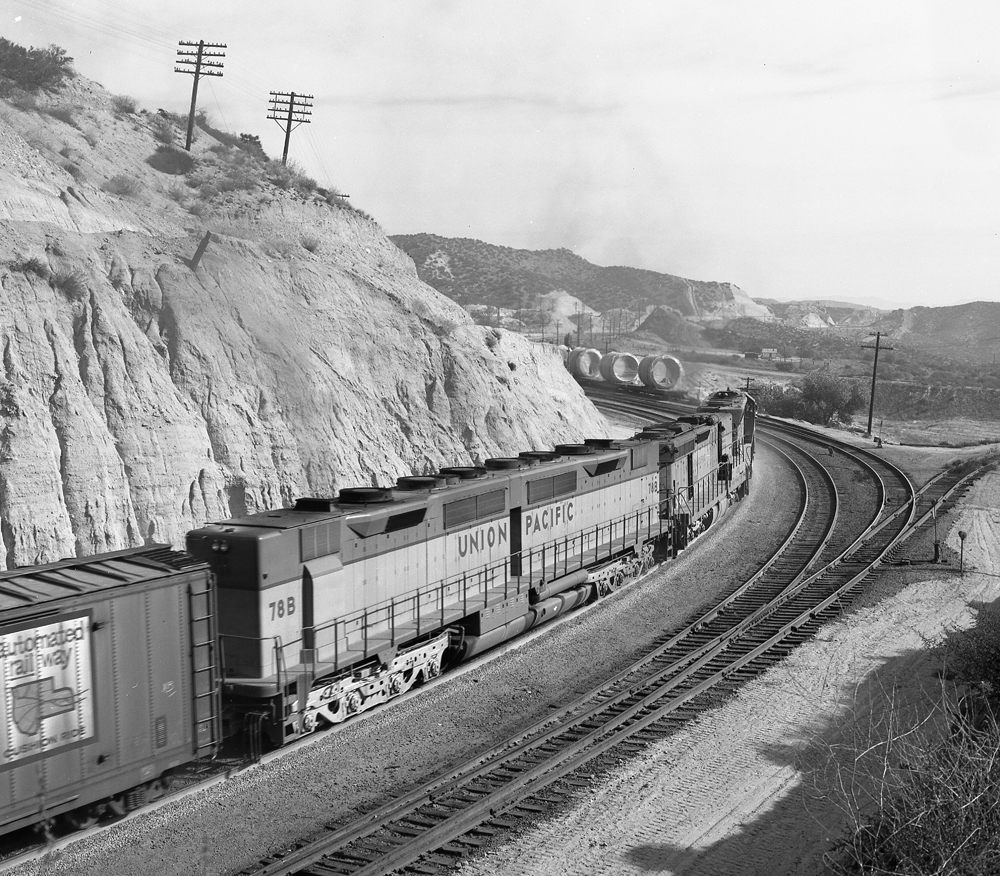
EMD was eager to put in a bid on Union Pacific’s early-1960s appetite for super-sized diesel locomotives. Hence the DD35.
The UP wanted to replace its effective but costly-to-operate GE turbine locomotives and wanted the locomotive builders to find an answer, in particular one that could produce about 15,000 hp in no more than three-locomotive consists.
The DD35 was an easy leap from the then-current 2,500-hp GP35 in the catalog; two GP35 prime movers and traction equipment on one long, rigid frame supported by a pair of newly designed four-axle Flexicoil trucks. No cab – there were hostler controls in the middle of the locomotive – just a basic “power block.” The ideal combination, it turned out, would be two DD35s sandwiched in between a pair of regular units, preferably GP35s. Four units, not three, but still, less than the six regular diesels it would have normally taken to achieve the desired horsepower output.
The flaw, if there was one, was that frailty of the basic GP35 design. The prime movers had met their engineering limits and the four-axle truck, while a nice design, beat up track.
EMD put out a demonstrator set which toured a number of railroads but only the original requestor, Union Pacific, plus Southern Pacific signed on. UP picked up the demonstrators and ordered 25 more, for a total of 29 DD35s. SP went for three, originally putting them on the long, dry, Sunset Route through the Southwest desert. Eventually they stayed closer to Southern California and wound up as regular units on transfer runs shuttling cars between Taylor Yard near downtown Los Angeles and the newer West Colton facility where their reliability would not be a factor.
While not the absolute success Union Pacific was hoping for, they did sire a number of other units including the DD35A (basically a DD35 with a cab) and the DDA40X Centennials.
8. GE U50: General Electric’s competition to the DD35
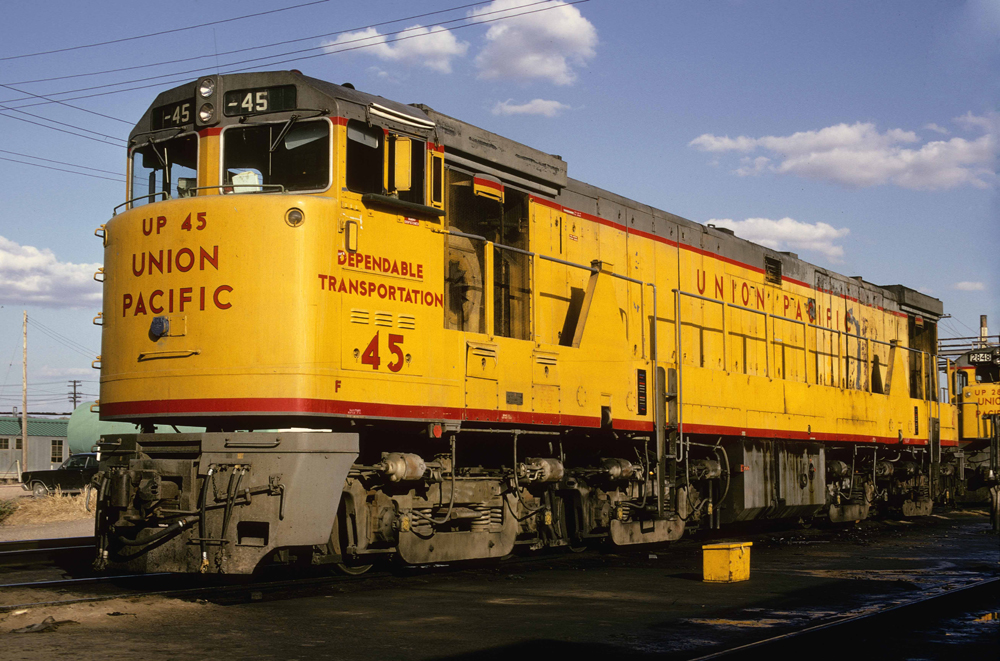
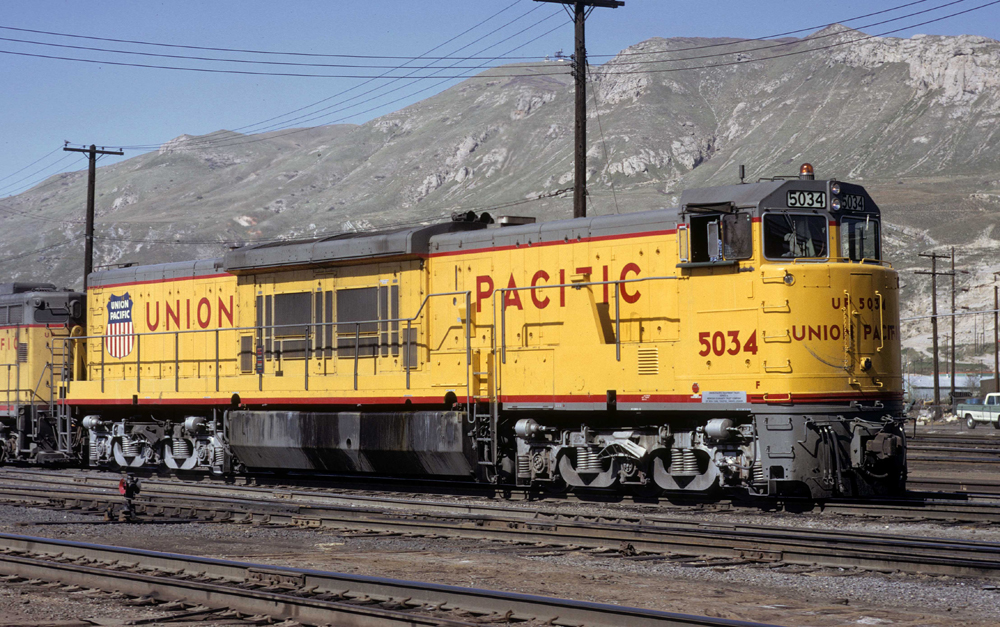
General Electric’s answer to Union Pacific’s request for larger diesels was the U50 – Universal model, 5,000 hp. Like EMD’s DD35s, it was a twin-engined design. Unlike the EMDs, with their D-D trucks, the U50s rode on four two-axle trucks. Simply put, they were U25B technology doubled and put on one frame. Twenty-six were picked up by Union Pacific, and Southern Pacific ordered three.
Of limited success, they were not the solution the builder or UP were looking for, and many were traded in on newer locomotives earlier than expected. Their replacement on the UP was the U50C, a similar concept riding on pair of C-C trucks and producing the same 5,000 hp with a pair of smaller prime movers. Forty of these were built. A little better, but still not good enough to warrant additional orders, and by the late 1970s both models were gone from the UP roster. SP’s three, usually seen on its Sunset Route between Los Angeles and Houston exited about the same time.
9. Baldwin-Lima-Hamilton RP-210 Xplorer
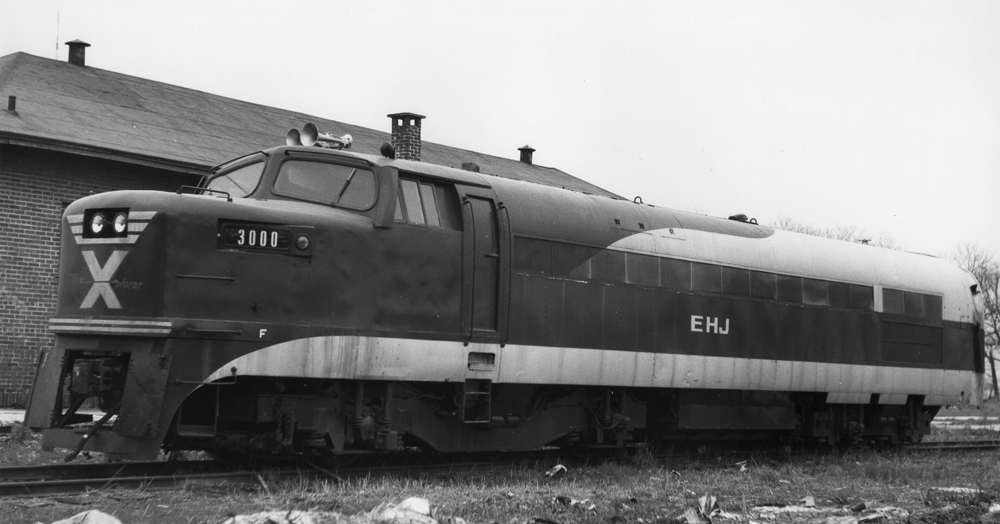
Sleek, with a nose inspired by Baldwin’s Sharknose freight and passenger units, the 1,000-hp RP-210 was the builder’s attempt to enter the lightweight passenger locomotive market to power newly designed, just as sleek, low-slung passengers cars in a market later dominated by Talgo. Three units built in 1956 incorporated a diesel-hydraulic design — one for New York Central and two for New Haven. Sadly, they were a dismal failure. By the time necessary fixes could be implemented, the lightweight-train revolution fizzled. Off the roster by the late 1950s, the locomotives and cars were sold to a subsidiary of South Carolina short line Pickens Railway and saw limited service before being scrapped.
10. Baldwin DR-6-4-2000X – a passenger unit with two cabs
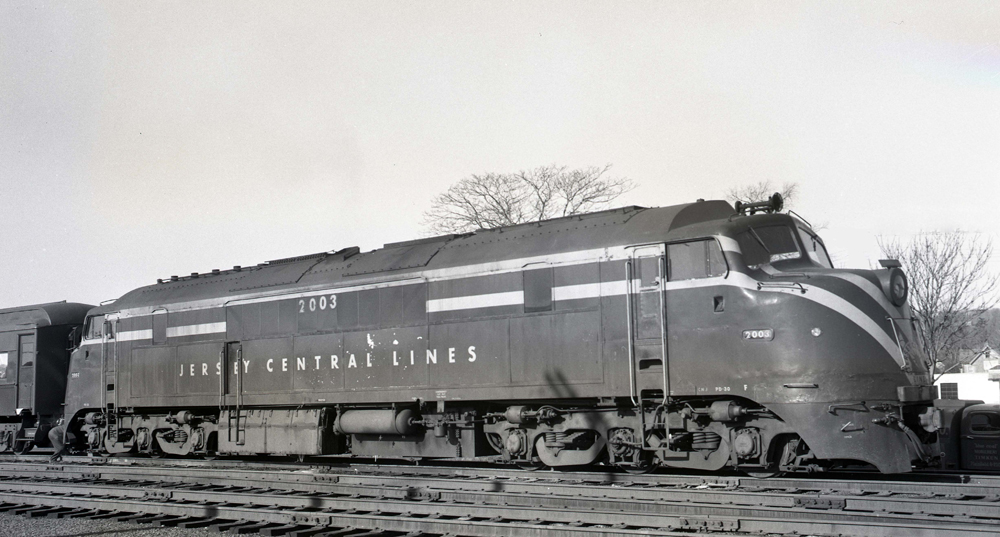
Diesel locomotives with a cab on each end were common in other parts of the world but have been a comparative rarity in the United States. Loyal Baldwin customer Central Railroad of New Jersey — Jersey Central — needed an answer to powering its commuter trains without having to wye the locomotive at the end of the run. Baldwin came to the rescue with its standard passenger design but with dual noses. They are the same nomenclature as the aforementioned Sharknoses which they did not resemble.
Six units came from the builder shortly after World War II, and in concept, they did as hoped. Sadly, as with many Baldwin road-units, they were mechanically unreliable and soon found themselves sidelined by more conventional EMD Geeps, Alco RSs, and Fairbanks-Morse Train Masters. Nice pullers when they worked, in the end, only fans were sorry to see them go.







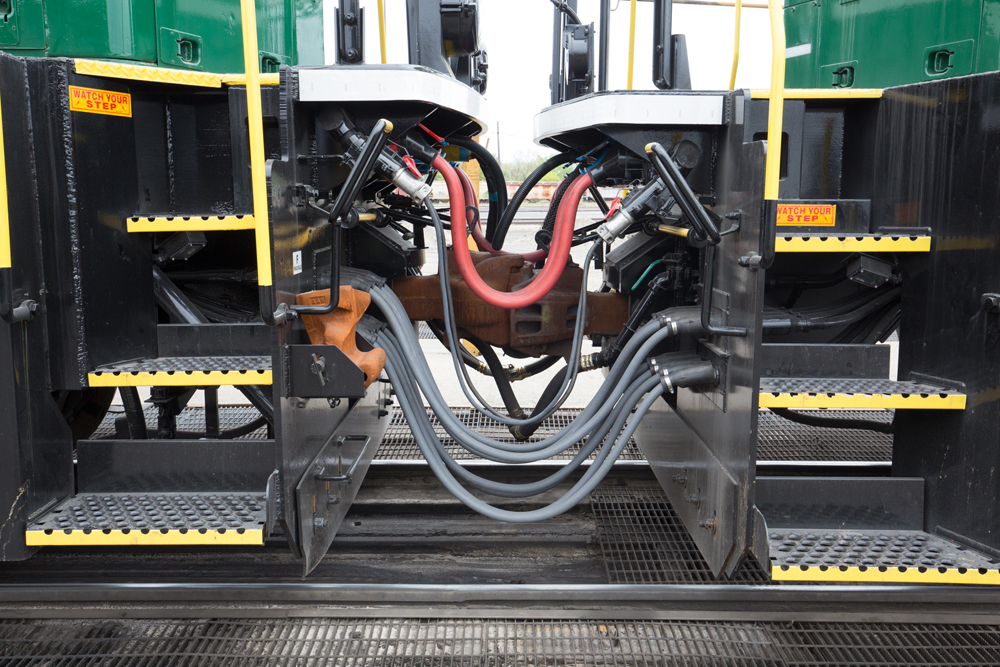
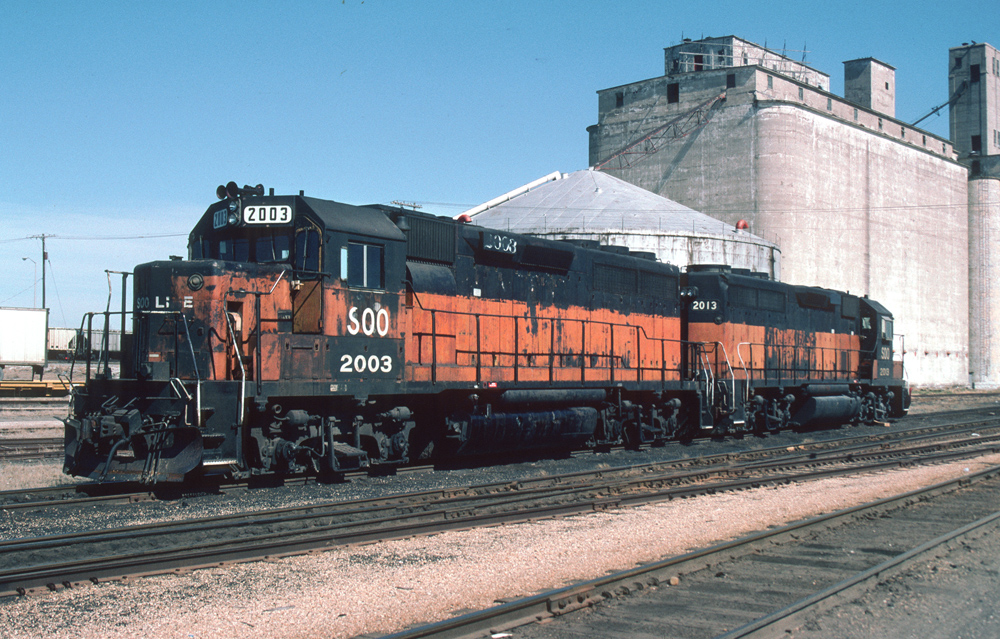
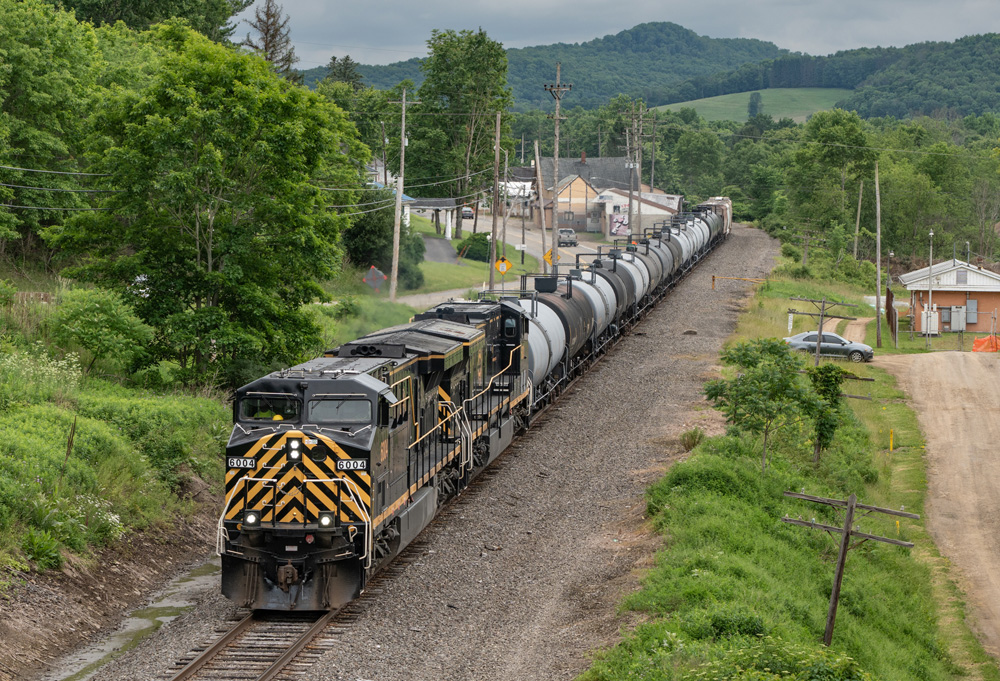




These locomotives at the very best were oddball units with a very small amount ever built and were experiments with good intentions and with an eye to the future but didn’t really make the grade. Still it was in a day when locomotive preservation and rail museums were not as widespread or as popular as they are today But as it is often said you don’t what you missed until it is gone. You only start to appreciate what might have been if an effort was made to preserve or save it. I’m pretty sure if railfan clubs and groups had worked harder or approached the railroads owning these unique locomotives and planning to get rid of them both parties could have worked to preserve at least one unit of each of these locomotives and either donated or sold them for a nominal price to a railfan group or museum for future generations to enjoy Joseph C. Markfelder
For cripes sake, for all that is good and Holy, Trains Magazine (formerly located at 1027 N. 7th Avenue in MILWAUKEE, WI) leaves the CMStP&P Railroad off the list of railroads that rostered the FM Erie-Built locomotives!!!!!! They were even built for a “hometown” (kinda) bulder. What are you guys smoking over there? The Olympian Hiawatha Erie’s with the chrome filigree should be at the TOP of the list.
Shame on you, shame, turn in your Railfan credentials (heck, even your “The Magazine of Railroading” credentials).
Shame
youleft out U.P.S # 1&2 steam turbines and Kraus Maffei ML4000
Those first generation diesels are understandable, as they were gone before anybody seriously considered preserving diesels. There were too many steam locomotives to save! What is inexcusable, though, is the failure to save an SD80MAC. They were the largest successful single engined diesel made, and served well until their small numbers made them a target for fleet rationalization due to PSR. Truly a landmark locomotive.
Although there were only two of them, GE’s W1 electrics were magnificent.
The Milwaukee Road, which purchased FM’s first switcher and other FM models, also owned Erie-Built A and B units.
Fred Hunt
With a top 10 list of diesel locomotives one believe to have saved from having a date with the crusher when in the early 1960’s had union Pacific invite the top diesel locomotive builders to build a sumo wrestler sized locomotive just for UP. As ALCO’s entry of sumo wrestler sized locomotives just for UP was the century 855 as within five years all models were melted down to be made into other steel products. From EMD came the DD35 and the DDA40X both built in cab and booster format when GE also won a contract with UP to satisfy its power hunger in the early 1960’s with the U-boats especially the U50. Other locomotives one believed to wanted to save is Baldwin’s baby face styled freight shark and or in other parts of the world had locomotives built with cabs on both ends when a loyal Baldwin consumer jersey central wanted a locomotive with cabs on both ends without going through the hassle of finding a turntable at the end of a run to turn the locomotive around when a freight shark locomotive done up in the baby face styling was built with cabs on both ends as engineers and conductors still had to go through the car body to run the locomotive as whatever cab the crew was running the locomotive from was the front.
Regarding the double-cab CNJ Baldwins, on weekends, those units would stray away from North Jersey…on occasion, they brought passenger trains that ran on CNJ for portions of their runs into Reading Terminal in Philly, also being serviced at Green Street engine terminal in Philly. I suspect their days of coming to Philadelphia ended before the Baldwins were retired.
The one I really would have liked to have seen saved was the single Ingalls 4-S diesel that wound up with the GM&O. It was built by a shipbuilder, complete with marine engine inside! Apparently successful and reliable for its intended role, and simply retired due to newer equipment becoming available. IRM wanted it, but couldn’t afford it at the time. A real shame.
Reliability and standardized did those colorful locomotives in.
Railroads couldn’t afford constant repairs, and they liked the idea of having either EMD or GE parts on hand to cover most of their fleet. Another factor was training, mechanics would have to have a vast knowledge of several different power systems.
Since these locomotives didn’t prove to promise any of these attributes, they went the way of the buffalo.
Mr Brewer. Buffalo faired better, with the endangered species act.